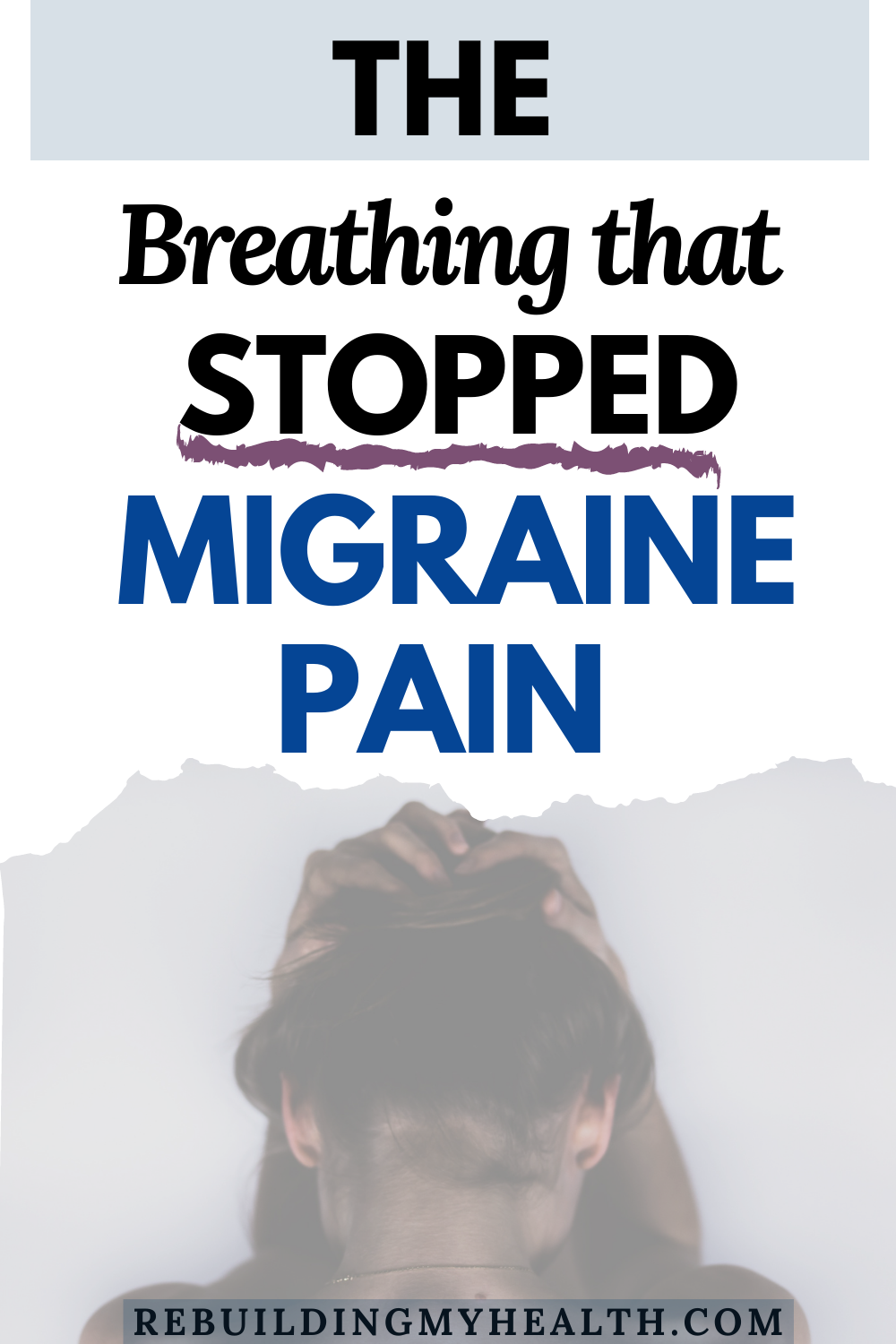With Breathing for Migraines, Lifelong Pain Finally Stops
Around the age of six, Aja Rose began getting headaches – and they remained nearly around the clock.
Despite the pain, she managed to keep functioning like a child: playing with friends, competing in sports and going to school. However, pain kept her sidelined at least one day a week.
“Because it was all I knew, somehow I was able to adapt to it and did get really good at putting on this façade,” she reflects.
From ages 6 to 19, Aja cycled through a jaw-dropping number of drugs for headache pain – 46 – but most didn’t work. Abortive drugs, designed to stop migraines after onset, eased the pain, but came with less-than-desirable side effects.
“A lot of the time, I felt like a zombie, very emotionally disconnected,” she recalls. Nor did she like the addictive nature and withdrawal symptoms of some of the heavy-hitting drugs she took.
Aja’s mother and grandmother had both endured migraines, so her doctors shrugged and suggested that it was just in her genes.
“I was told by countless doctors that the headaches were hereditary, and I would just have to live with it,” she says. “I had gone to so many different doctors and healers. It was like I was this case that was unsolvable.”
No Relief from Migraines – Even at a Top Hospital
Aja thought her headaches were as bad as they could get. Then at age 20, the pain intensified such that she was bedridden for months – forcing her to drop out of college.
“On a pain scale, I was never below a six (out of 10) for a year and a half,” she says.
For help, she turned to what was considered the best headache clinic in the world. For a week, she received intense IV drugs and an hour of group therapy each day.
And yet, she saw no relief from her migraines. Was this really the best care she could get?
“I left there being prescribed nine different drugs,” she says. “It took about a week to withdraw off all of them.”
Search for Holistic Solutions for Headaches
After that experience, Aja resolved to search for holistic solutions for migraines, a journey that would ultimately take eight years.
In the past, she had experimented with diet, acupuncture and massage, but none of them helped much. This time, she began researching books on the brain.
She also saw a holistic chiropractor/kinesiologist, who ran a slew of tests on Aja’s nutrition levels. As a result, she started taking B vitamins and magnesium, plus cleaned up her diet, which did ease her headaches somewhat. That measure of relief gave her a new sense of hope.
“I think even bigger was this shift in mindset that I could do it in this natural way and that I could heal myself,” she says.
The Breakthrough: Breathing for Migraines
Meanwhile, Aja tried other modalities, including yoga and breathwork.
In 2015, she landed at a breathwork retreat in Thailand. Having read about the approach, called conscious connected breathing, she felt, “everything about it was resonating.” There, she experienced a profound experience that signaled she was on the right path.
“My whole body was paralyzed. I couldn’t move anything,” she says. “I stuck with it and eventually it released. I had the most profound sense of release, and after that, felt completely blissful and content. I still had pain, but there was a shift.”
That experience encouraged Aja to stay on that path. She now understands the power of breath to help clear blockages in the mind and body.
“A lot of times in the first few sessions of breathwork, it can bring up really deep stuff, things locked in our bodies, patterns, these rigid thoughts or beliefs imprinted in our subconscious,” she says. “So when we really access it in this powerful way and bring it to the surface, sometimes there can be a lot of resistance, kind of a purification that happens. It can be anything from crying to having a profound spiritual experience or being very physically painful.”
Hopeful, Aja signed up for an entire month of facilitator training. Then, about seven sessions in, her headaches nearly stopped entirely.
“After about seven breathwork sessions, all of sudden my headaches decreased by 80-90 percent,” she says.

What is Conscious Connected Breathing?
Aja describes conscious connected breathing as a circular pattern of breath that’s intended to build energetic currents in the body. By breathing in a large amount of oxygen and life-force energy, she says, blockages and patterns on all levels can naturally release.
“By taking in a large amount of energy, it allows whatever is trapped to be in motion again,” she says.
For the breathwork, you typically lie in a comfortable spot, with another person facilitating. You breathe in a circular pattern for about 40 minutes. Then, there’s about 15-20 minutes of deep release at the end.
“Every session is so different,” she says. “There’s a huge spectrum of what can happen in a session. The common experience at the end is that you feel very relaxed. If there’s any pain, it almost always releases and you feel very content and naturally grateful.”
A Migraine Prevention Plan
These days, Aja only experiences headaches a couple of times a month. When they come on, she can usually pinpoint why, such as stress, too much time on the computer, lack of sleep or emotions.
“A lot of times for me, it’s emotional. If I’m being really hard on myself or putting pressure on myself, or if I’m feeling like I need to get someone else’s approval, I definitely get one,” she says.
She also avoids alcohol, which can bring on a migraine.
Besides breathwork, Aja’s migraine prevention plan includes massage and essential oils such as peppermint, lavender and rosemary.
She continues to do conscious connected breathing a couple of times a month with a facilitator guiding her. Or, she’ll slip into the bathtub for a self-guided session in water.
“Once you’ve done about eight sessions, you can start doing it in water,” she says. “It takes about 20 minutes and it’s more powerful.”
Her breathwork practice was so potent for her that she decided to make it her mission to bring it to more people. She now leads online and in-person sessions in Colorado and internationally, including courses for women with migraines.
“It’s one of the most heart-open things you’ll ever experience,” she says. “Whatever you’re needing, it will help uncover and unravel that.”
Try Breathing for Migraines
Ready to try breathwork? Check out some of Aja’s practices.
Aja’s Top 3 Favorite Practices to Transform Migraines
Meditation for Pain:
If you liked this story, you might also enjoy: Colorado Woman Rapidly Ends Migraines, Anxiety with Neurofeedback.
The information on this site is for educational and inspirational purposes only and is not intended to replace the advice of qualified professionals. Keep in mind that what works for one person may not work for another. Always consult your healthcare practitioners before beginning new approaches or treatments. Some links on Rebuilding My Health may be affiliate links. This means that we may receive a commission - with no additional cost to you - if you make any purchases using those affiliate links. Rebuilding My Health is a participant in the Amazon Services LLC Associates Program. Learn more.


